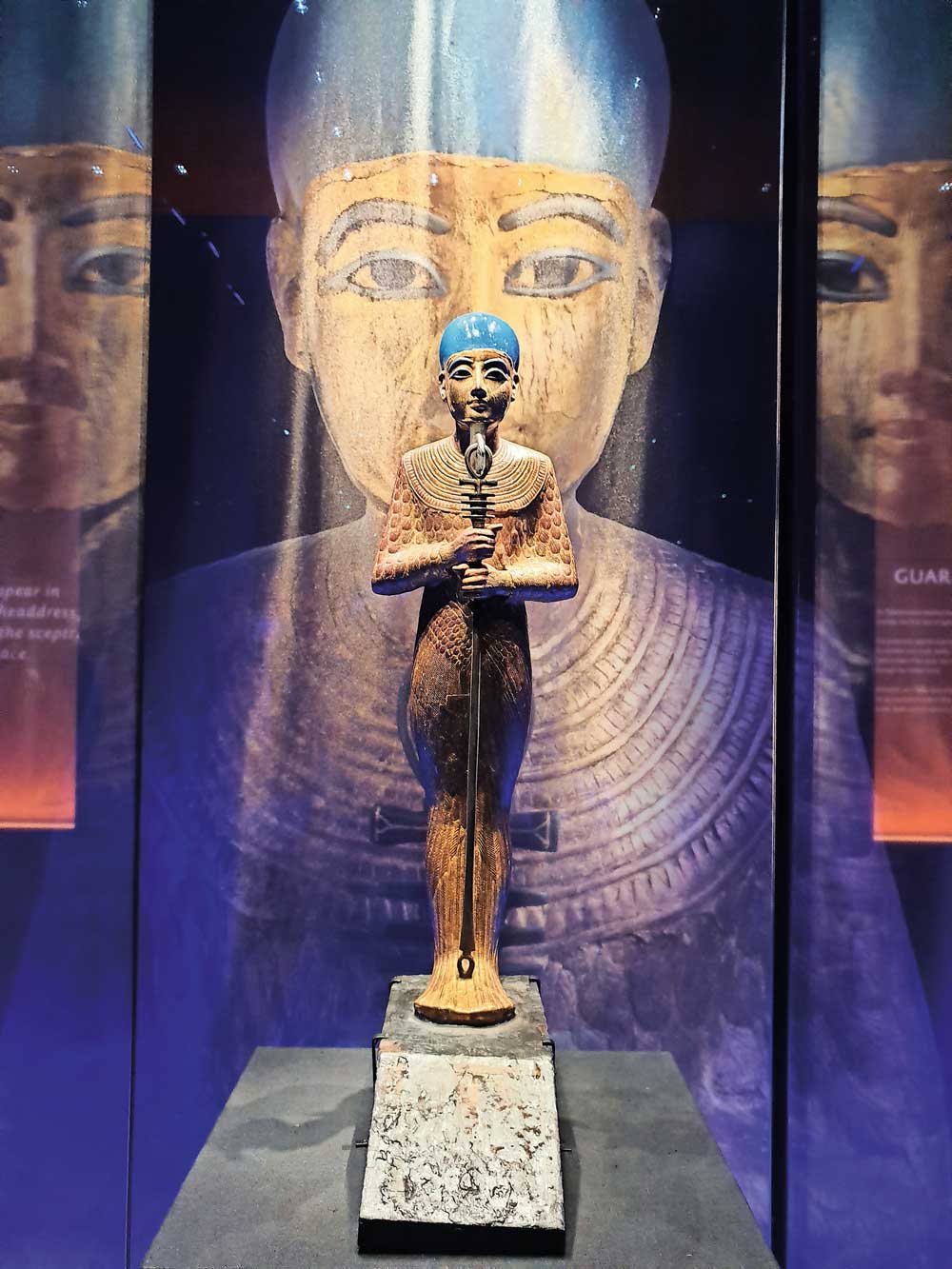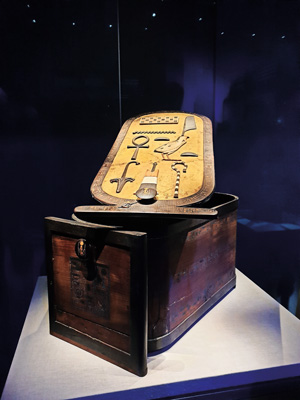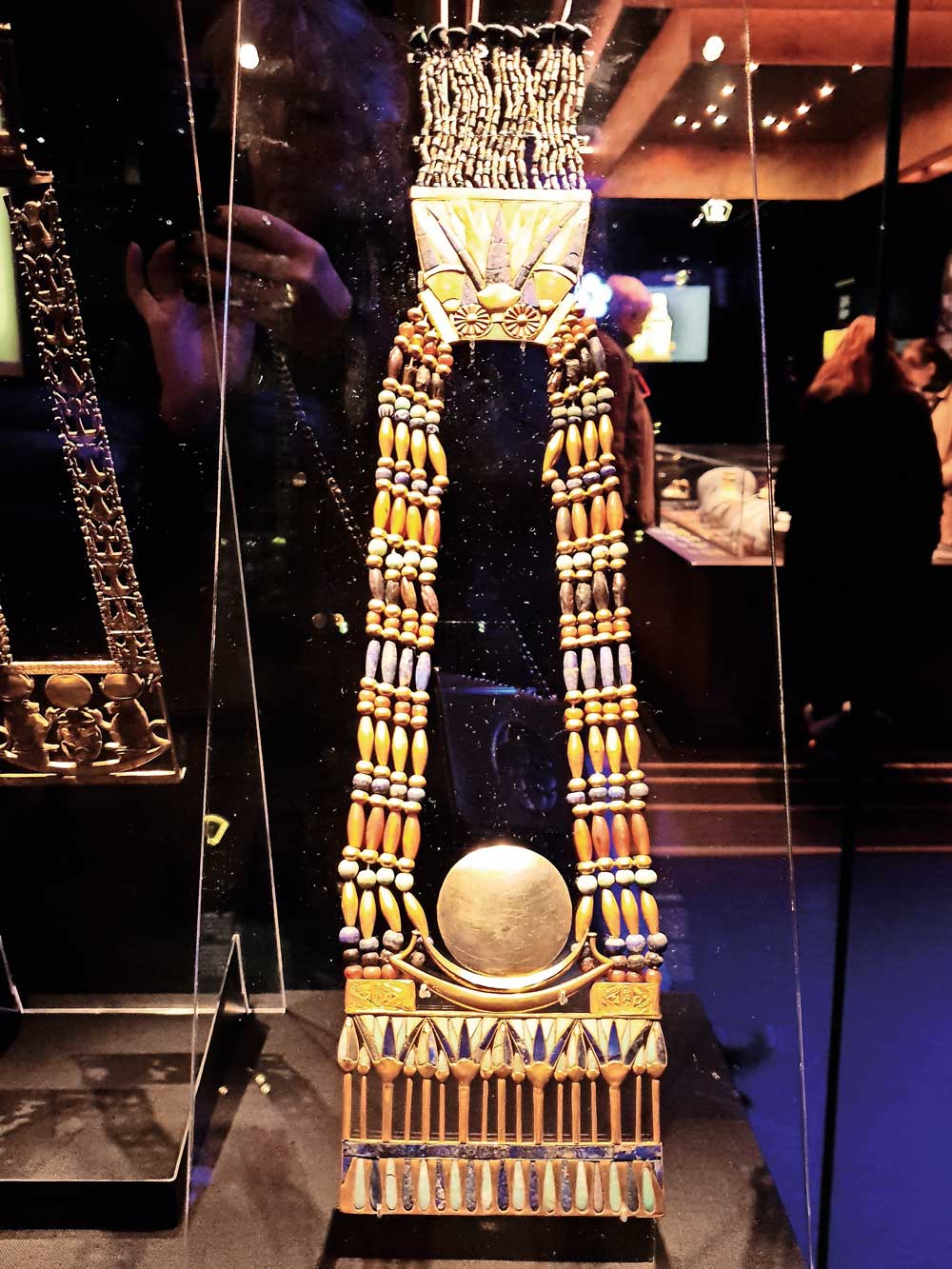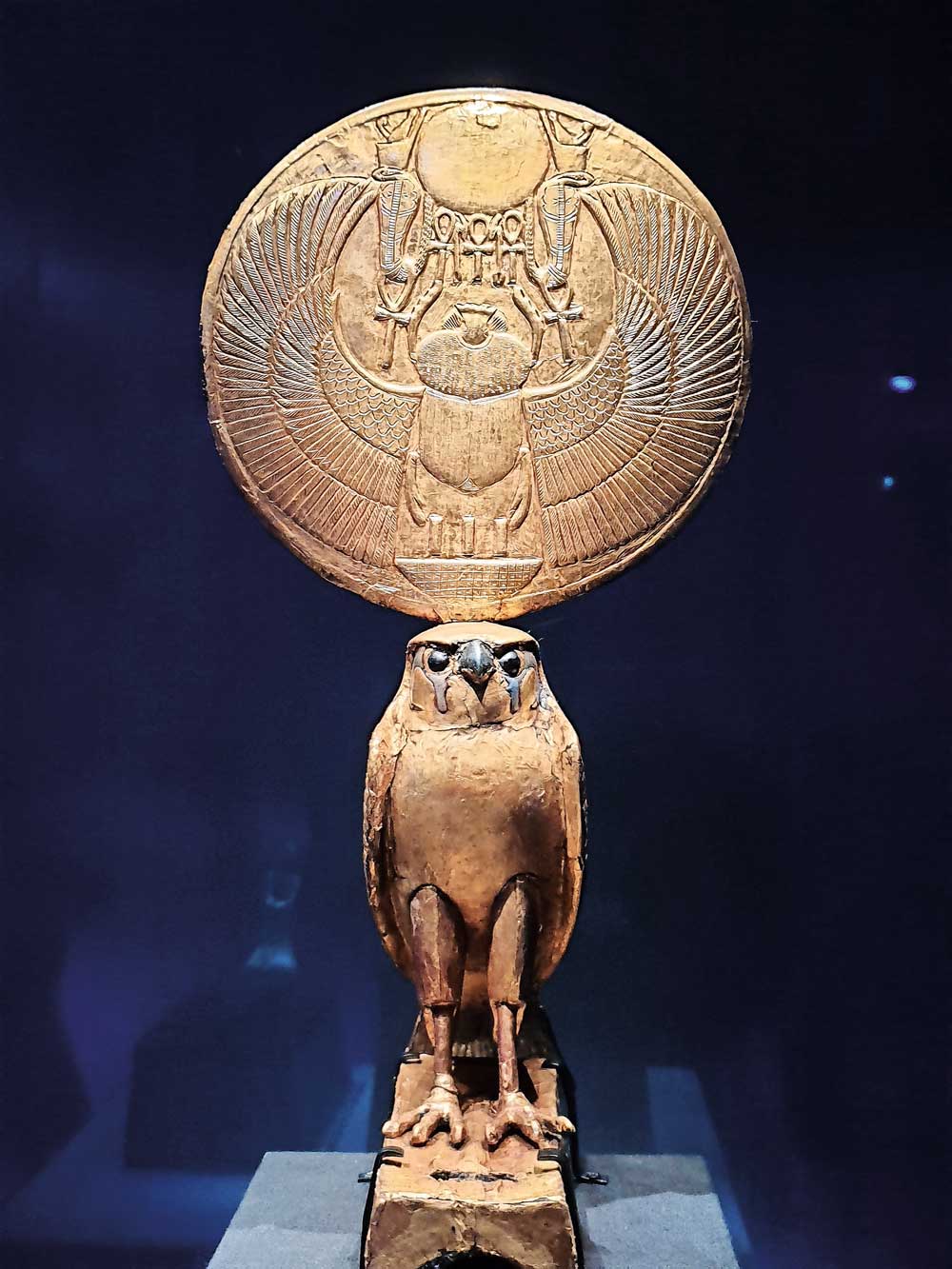

Part of a wooden guardian statue of the ka of the king, wearing the nemes headcloth, from Tutankhamun Golden Pharaoh.
Words and photos: Tina Edward Gunawardhana
As you step into the Saatchi Gallery that houses the Treasures of the Golden Pharaoh, it is not the abundance of gold that takes your breath away, instead it is the sheer brilliance of craftsmanship that makes you gasp. An eclectic archaeological collection of 150 artifacts that include statues, jewellery, pottery and gods remind us that King Tutankhamun was a frail boy who ended up being feted as one of Egypt’s most famous kings.
 |
 |
The sumptuous selection of artifacts at the Saatchi Gallery in London on display until May 2020 helps enthusiasts to explore the life of King Tutankhamun. The exhibition on the last leg of what claims to be King Tutankhamun’s final world tour before he and his treasures are permanently housed at Giza’s Grand Egyptian Museum next year also marks the centenary of the discovery of King Tut’s tomb by Howard Carter.
It is believed that more than 3000 years ago, some of the top artists in Egypt were ordered to create all the paraphernalia the young Pharaoh would need in his afterlife.
The pieces they have created are intricate and beautiful. From ornately carved wooden chests to intricate gem laden necklaces, the amount of treasures on display is astounding.
The entire exhibition which commands
a large section of the Saatchi Gallery in Sloane Square is spread over several floors. Glass cases with ambient lighting are packed with artifacts. Ancient Egyptians certainly did not do things by halves. Slender bows made in gold are inlaid with priceless precious stones and decorated with the most beautiful effigies of falcons and cobras. The vast expanse of gold is punctuated by the translucent white calcite of delicately carved vessels, the deep russet of a carved redwood chest and the piercing cold blue glazed statue.
What I found most thrilling was coming face to face with the wooden guardian statue of the King’s Ka which is part of the Egyptian concept of the soul. Carved out of blackened wood, this statue stood guard for a millennium outside the sealed inner door of King Tutankhamun’s burial chamber. The shiny headdress, the cobra on his forehead and his gold skirt are both menacing and stunning. Witnessing a visual masterpiece such as this is a once in lifetime experience.
There are several statues of King Tutankhamun engaged in various pursuits which include arm raised about to spear a fish, steering a ship, riding a panther and hunting lions.
The tiny wooden chair a version of the throne on which King Tutankhamun was crowned and a collection of wooden boxes, one shaped like the carcass of a duck into which cuts of meat were packed to feed the king in his afterlife capture the humanity of the boy king.
In the middle of the exhibition there is a mock coffin covered in the original artifacts which include a scarab beetle and the royal symbols of the flail and crook. As you exit the exhibition, there is a picture of the mummified body of King Tutankhamun which drives home the frailty of the boy who became king at the age of 9 and ruled Egypt till his untimely death ten years later.

